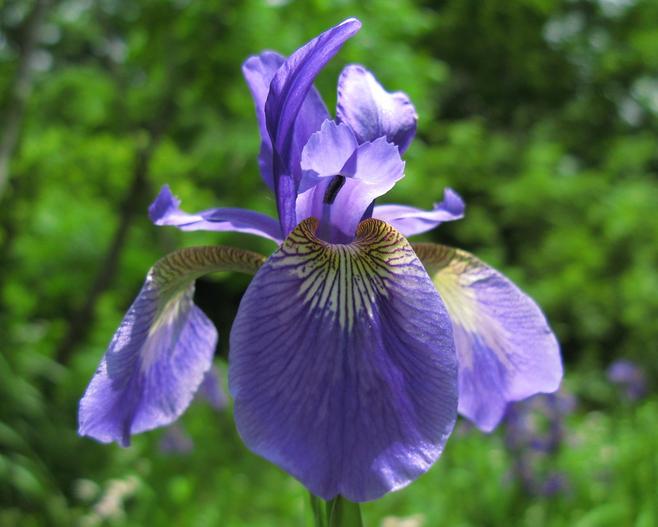Blood Iris
(Iris sanguinea)
Blood Iris (Iris sanguinea)
/
/

TANAKA Juuyoh (田中十洋)
CC BY 2.0
Image By:
TANAKA Juuyoh (田中十洋)
Recorded By:
Copyright:
CC BY 2.0
Copyright Notice:
Photo by: TANAKA Juuyoh (田中十洋) | License Type: CC BY 2.0 | License URL: https://creativecommons.org/licenses/by/2.0/ | Uploader: TANAKA Juuyoh (田中十洋) | Publisher: Flickr























Estimated Native Range
Summary
Iris sanguinea, commonly known as Blood Iris, is a semi-deciduous perennial herb that is native to moist meadows, stream banks, and the edges of forested areas in East Asia, including the Russian Far East and Mongolia. It features grey-green, sword-shaped leaves and produces an unbranched flowering stem that can reach heights of 30 to 90 cm (12 to 35.5 in). The Blood Iris is notable for its striking flowers, which bloom in early summer, typically from May to July. The flowers come in various shades of reddish-purple, ranging from blue to blue-purple, red-violet, and there is even a rare white variant. Each stem bears two to three showy flowers at its terminal ends, making it a visually appealing addition to gardens.
Blood Iris is valued for its vibrant flowers and ability to naturalize in suitable conditions. It is often used in water gardens, bog gardens, and as a border plant in perennial gardens. While it can be prolific under optimal conditions, it is not typically invasive outside its native range. Gardeners should plant Blood Iris in well-drained, neutral to slightly acidic soils enriched with organic matter, or loam. It thrives in full sun but can also grow in partial shade, provided it receives several hours of sunlight. Consistent moisture during the growing season is crucial for producing the best blooms. Despite its preference for high moisture levels, it is important to avoid waterlogged conditions to prevent rhizome rot.CC BY-SA 4.0
Blood Iris is valued for its vibrant flowers and ability to naturalize in suitable conditions. It is often used in water gardens, bog gardens, and as a border plant in perennial gardens. While it can be prolific under optimal conditions, it is not typically invasive outside its native range. Gardeners should plant Blood Iris in well-drained, neutral to slightly acidic soils enriched with organic matter, or loam. It thrives in full sun but can also grow in partial shade, provided it receives several hours of sunlight. Consistent moisture during the growing season is crucial for producing the best blooms. Despite its preference for high moisture levels, it is important to avoid waterlogged conditions to prevent rhizome rot.CC BY-SA 4.0
Plant Description
- Plant Type: Herb
- Height: 2-3 feet
- Width: 1-2 feet
- Growth Rate: Moderate
- Flower Color: Blue, Purple, White
- Flowering Season: Spring, Summer
- Leaf Retention: Deciduous
Growth Requirements
- Sun: Full Sun, Part Shade
- Water: Medium
- Drainage: Medium
Common Uses
Bee Garden, Bird Garden, Border Plant, Butterfly Garden, Deer Resistant, Hummingbird Garden, Low Maintenance, Potted Plant, Rabbit Resistant, Rock Garden, Showy Flowers, Street Planting, Water Garden
Natural Habitat
Moist meadows, stream banks, and the edges of forested areas in East Asia
Other Names
Common Names: Bloodred Iris, Yellowband Iris, Ostsibirische Schwertlilie, Xi Sun, 붓꽃, Japanese Iris
Scientific Names: , Iris sanguinea, Iris nertschinskia, Iris nertschinskia var. pumila, Iris sanguinea var. typica, Iris sibirica var. sanguinea, Limniris sanguinea,
GBIF Accepted Name: Iris sanguinea Donn ex Hornem.